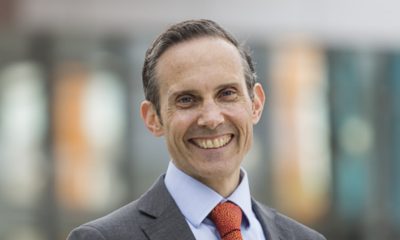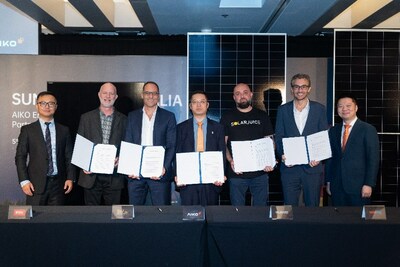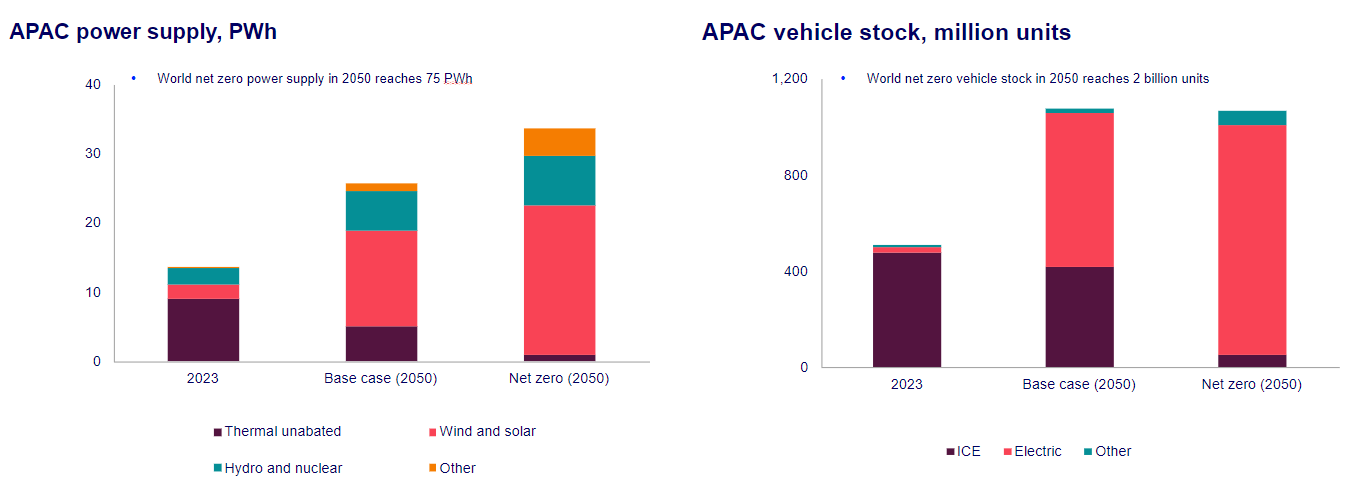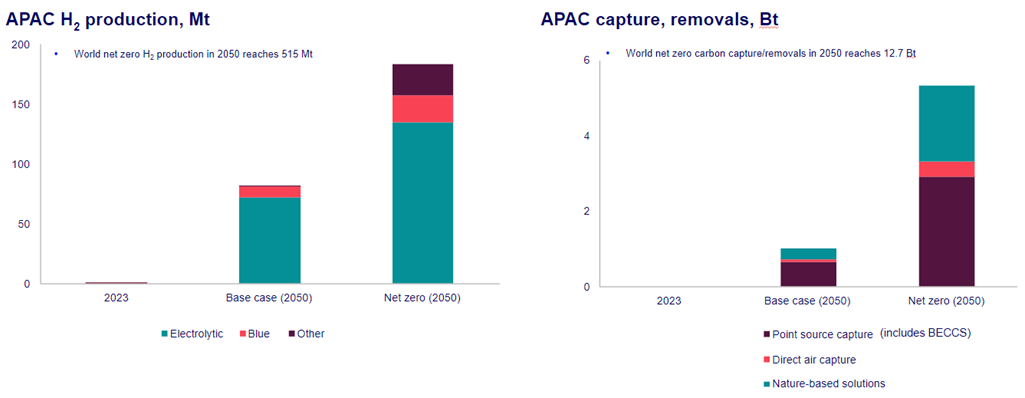Environment
Perilya and Hydrostor Join Forces for Innovative Energy Storage Venture

Hydrostor, a global long duration energy storage (LDES) developer and operator, and Perilya, a developer and operator of global mining projects, have entered into a binding agreement to leverage the existing mining assets at Perilya’s Potosi Mine in Broken Hill to support the construction of the Silver City Energy Storage (SCES) Project.
Perilya Broken Hill Limited and Hydrostor have been working together since 2020 to evaluate the potential of a large-scale long duration energy storage project adjacent to the Potosi Mine northeast of Broken Hill, NSW, which will continue to operate as normal.
The Silver City Project uses Hydrostor’s Advanced Compressed Air Energy Storage (A-CAES) technology and will leverage several unique features of the Perilya Potosi Mine Site, including:
- Very hard and impermeable metamorphic rock at the mine site;
- Existing underground mine development, providing access to construct the underground cavern at optimal depth of approximately 600m below ground;
- Existing mine support infrastructure, facilitating the construction of the project.
Martin Becker, Hydrostor’s Vice President of Business Development and Origination in Australia said “Hydrostor is excited to partner with Perilya on this unique and critical infrastructure project. Silver City is our first Australian project and will be a showcase for A-CAES technology in the future”.
Long-Term Operation of Potosi Mine
The agreement includes access to property transactions and existing mine infrastructure, provision of construction support services, and supports the continued and longer-term operation of the Potosi Mine during and after the Project is being constructed.
Bruce Byrne, Chief Operating Officer of Perilya Broken Hill Limited said “The project will realise additional value to an important asset, well after the current developed stopes are completely mined”.
Paul Rasmussen, Hydrostor’s Vice-President of Integration said “By leveraging the existing mine investment and infrastructure, this partnership enables us to improve project delivery timeframe, since we can build the underground air storage cavern much faster, with reduced setup costs and a better understanding of the geology at site”.
This is a unique agreement in the Mining and Energy sectors and supports an important multiple land use outcome, allowing the Potosi Mine and the SCES Project to co-exist and benefit from each other.
SCES Project
The SCES Project represents a game changing outcome for mining in Broken Hill and the wider region. It leverages and enhances mining investment, both during and beyond the life of the mine, and as a post closure mining land use, it is currently unmatched in its value, contribution and benefit to the region and state.
The range of benefits to the local region include:
- Significant employment, skills, and training opportunities including 750 direct and indirect jobs during construction and 70 ongoing jobs in operation.
- A contribution of over AUD$1B to the regional economy.
- Opportunities for local suppliers, contractors, and service providers.
The SCES Project has been selected by Transgrid as the preferred solution to provide backup power for Broken Hill and the Far West region of NSW. The Project will provide reliable backup power for both the town and existing or new mining activities in the region.
The Project is supported by the NSW Government under the Emerging Energy Program and by the Federal Government via a grant from the Australian Renewable Energy Agency (ARENA).
Environment
AIKO Powers Into Australian Market with Cutting-edge Solar Modules

AIKO, a global leader in new energy technology, celebrates its strategic entry into the Australian market at the Smart Energy 2024 event. Showcasing its innovative GEN 2 N-type ABC (All Back Contact) modules, including the ‘Neostar’, ‘Comet’, and ‘Stellar’ series, at Booth 70, ICC Sydney, from 6th – 7th March, AIKO demonstrates its commitment to enhancing Australia’s clean energy capabilities.
In a significant move, AIKO revealed partnerships with leading solar distributors such as Solar Juice, AC Solar Warehouse, Sol Distribution, and Tradezone, committing to delivering 2GW of AIKO’s GEN 2 N-type ABC solar modules to the Australian market over the next three years. This marks the beginning of AIKO’s journey to establish itself as the premier provider of high-end solar components for households, with the ambition to capture the leading position in the market.
Henry Xia, Vice President of AIKO Digital Energy, emphasizes the company’s mission, “Entering the Australian market reflects AIKO’s deep commitment to accelerating the world’s shift to a carbon-free society and highlights our efforts in advancing solar technology on a global scale. Our GEN 2 modules exemplify this drive, offering high power output, superior partial shading optimization, and effective temperature control to ensure optimal performance under various conditions. With a remarkable 25.15% conversion efficiency, certified by TÜV-SÜD, our latest ABC modules are redefining industry standards, emphasising AIKO’s dedication to pushing the boundaries of photovoltaic technology.”
At an exclusive event earlier in Darling Harbour, Sydney, in conjunction with the Australian launch, Scientia Professor Martin Green – the ‘father of photovoltaics’, offered his insights: “AIKO’s innovative work on their ABC solar module resonates closely with our vision for the future of silicon photovoltaics, especially in back contact structures. We celebrate AIKO’s remarkable achievement in shipping 24%+ commercial solar modules and commend their steadfast commitment to high efficiency and quality. AIKO’s president, Mr. Chen, visited us last year, and we share his belief that the community must continue to seek next-generation technologies. We look forward to more breakthroughs from AIKO.” This endorsement from such a distinguished expert highlights AIKO’s leading role in the advancement of solar technology.
Alex Hang, President of AIKO APAC, highlighted the company’s customer-centric approach: “Our GEN 2 N-type ABC modules are carefully designed to meet the diverse solar needs of Australia, including residential, commercial and industrial (C&I), as well as utility-scale applications. To ensure comprehensive access to our solar solutions, we also have our nationwide sales and distributor network spans the entire nation including both key cities and remote areas. Our commitment at AIKO extends beyond products as we actively support our distributors and provide training for installers, thereby nurturing a strong ecosystem that serves the interests of all parties involved and ensures that sustainable energy is accessible in every scenario.”
Environment
Veracio Marks One-Year Milestone with Advanced Orebody Tech

Veracio, an orebody knowledge technology company that formerly operated as Boart Longyear’s Geological Data Services division, celebrates the one-year anniversary of its establishment as a wholly owned subsidiary. Unveiling a suite of offerings for 2024, Veracio’s new and refreshed orebody knowledge tools – TruScan® 2, TruProbe® and StrataTM – are set to improve, automate, and digitally transform orebody sciences in exploration, resource definition and production globally.
JT Clark, CEO of Veracio reflects on the journey stating, “In just one year –from introducing Veracio to the world to now– our progress has been remarkable. Our new technologies, our team’s dedication, and our strategic acquisitions like Minalyze have all been steps towards realizing our overarching vision of transforming how we capture and utilize orebody knowledge, from exploration to production.”
Veracio is set to unveil its advanced portfolio of orebody technologies at the upcoming PDAC convention from March 3-6 in Toronto, Canada:
- TruScan® 2, featuring HyperXRFTM, a mineralogical solution integrated into Veracio’s award-winning core scanning platform boasts of co-registered data streams from both hyperspectral and XRF scanning supported by enhanced QA/QC. The versatile scanning capabilities of both chips and core provide scanning data, including mineralogical data, to teams within 24 hours. Field trials are commencing in early Q2, followed by first deliveries to customers in Q3 of 2024. Pre-orders are available from today.
- TruProbe®, an integrated app, cloud and stackable hardware solution; combining both rig and downhole sensing technologies. Building upon the foundations set by Veracio’s north seeking TruGyro, TruProbe® “stacks” a robust gamma sensor to enable operators to log both borehole deviation and gamma simultaneously. On the rig, the app connects to an azimuth rig aligner and wireless depth counter. The software in both the handheld app and the cloud drives efficiency and accuracy through a simple, easy-to-use design, while the hardware is integrated with industry-standard running gear for safer, faster operation. TruProbe® is available to order today.
- StrataTM is Veracio’s cloud technology environment, and 2024 will see more added to the experience. This cloud environment ensures there are sophisticated software offerings available to pair with all Veracio hardware, now further enriched by the recent additions to the MinalyzeTM software offering, including MinaloggerTM. For downhole surveying, the seamless connectivity to the TruProbe® app will provide a new way to visualise 3D hole path and empower teams with easy-to-use data access to advance their projects no matter where they are in the world.
Mike Ravella, Chief of Innovation, emphasized, “This portfolio represents just the beginning of our journey. We are constantly evolving, striving to pioneer the next-generation orebody knowledge and bring it to the forefront of the industry.”
Veracio’s ascent in the global mining industry in 2023 was led by strategic transactions, establishing Veracio as the world leader in core scanning and a fierce competitor in driller-operated tooling. Notable achievements include the successful acquisition of Minalyze and collaborations with TruScan clients like Foran Mining and Newcrest (now Newmont) in Canada, and Sierra Gorda in Chile. Furthermore, Veracio forged a distribution partnership with International Directional Services (IDS) in the United States alongside industry partnerships with organizations like Tribe Tech and Australasian Institute of Mining and Metallurgy (AusIMM). These partnerships, driven by shared visions of innovation and efficiency, demonstrate Veracio’s vision of progress and exemplify Veracio’s dedication to advancing the mining industry into the future with smarter data and a smaller environmental footprint.
Environment
Asia Pacific Positioned for Global Energy Transition Leadership, says Wood Mackenzie Report

Home to half of the world’s population and contributing a third to the global GDP, the Asia Pacific region is expected to maintain a 50% share of global primary energy demand and a 60% share of global carbon emissions until 2050. This trend is unlikely to change without strong policy action and investment. However, the region still has the potential to turn these challenges into opportunities and become a global leader in the energy transition, according to ‘Wood Mackenzie’s Asia Pacific Energy Transition Outlook (ETO)’ report.
This report is part of Wood Mackenzie’s ETO research series, which analyses three different pathways for the energy and natural resources sector*.
“Every country in the Asia Pacific region is vastly different in terms of population growth, economic development, policy landscape, what natural resources they have and – more importantly – what they don’t have will determine how they transition to a low-emissions pathway,” said Prakash Sharma, Vice President, Scenarios and Technologies Research at Wood Mackenzie.
Pathways to low-carbon energy transition
“The Asia Pacific region is the largest power generation and renewables market today, but it’s also the most diverse. Each nation has different local resources, economic factors, and political situations that drive it. To balance the steps needed to decarbonise with economic reality, renewables and electric vehicles (EVs) will be key to this region’s transition,” said Jom Madan, Energy Transition Research at Wood Mackenzie.
According to Wood Mackenzie’s base case scenario, the Asia Pacific EV stock is projected to rise from 24 million cars today to a staggering 635 million units by 2050. Furthermore, an additional 30% growth in EV stock is expected in the pledges scenario, while the net zero scenario anticipates a remarkable 60% increase. This exponential growth is driven by the affordability of EVs and the availability of resources in the region.
Source: Wood Mackenzie Energy Transition Service
Hub of new technology opportunities
In Wood Mackenzie’s base case, low-carbon supply accounts for 35% of power generation today, and it’s projected to rise to 75% by 2050, while the share of wind and solar increases to over 54%. China is set to achieve a cumulative solar and wind capacity of 2,000 GW by 2030, exceeding their target. By 2050, Australia is poised to lead the Asia Pacific region in renewable power generation, with a share of more than 80% in the base case and the scenarios.
This rapid growth in variable renewables is accompanied by adopting energy storage, hydrogen, small modular nuclear reactors, and geothermal technologies. By 2050, nearly 50% of the world’s new technology opportunities for low carbon emission will be in the Asia Pacific.
Hydrogen: Low-carbon hydrogen will reach 3.5% of final energy demand by 2050 in the base case and 12% in the net zero scenario, pushing out fossil fuels in chemicals, steel, cement and heavy-duty mobility.
Carbon Capture, Utilisation and Storage (CCUS): In Wood Mackenzie’s base case, point source and direct air carbon capture are expected to increase from 3 million tonnes in 2023 to 755 million tonnes by 2050. In the net zero case, the deployment will reach about 3,360 million tonnes by 2050. However, a significant expansion will be required to develop transport, shipping, and storage infrastructure to accommodate this increase.
Source: Wood Mackenzie Energy Transition Service
“The successful implementation of CCUS and low-carbon hydrogen requires strong policy support. Although several markets have established goals of achieving net zero emissions, few countries are currently on track to meet them,” said Roshna Nazar, Research Analyst, Energy Transition at Wood Mackenzie. “Robust carbon pricing, tax incentives, and supportive regulatory regimes are needed to incentivise the transition and close the emissions gap.”
Energy juggernaut
“The Asia Pacific region is accounting for a third of global oil demand, a quarter of global gas demand, and 80% of global coal demand. But it doesn’t produce enough to meet this demand on its own,” said Nazar.
According to Wood Mackenzie, gas demand will continue to increase for 15 years in all scenarios, with growth in power and industry offsetting the long-term decline in buildings. By 2050, gas demand is expected to grow from 890 billion cubic meters (bcm) to 1,285 bcm in the base case but fall to 655 bcm in the net zero scenario.
“Despite most of the Asia Pacific region being net importers of both oil and gas, domestic gas supply is declining in the region. It will require either new discoveries or liquefied natural gas (LNG). Even in the net zero scenario, substantial investment will be needed to maintain the supply from existing fields and develop new sources,” Nazar added.
-
Business2 years ago
How to Earn Money Writing Blog Posts in 2023: A Comprehensive Guide
-
Games2 years ago
How does Dead Space Remake enhance the Horror Classic of 2008
-
Video2 years ago
Everything you need to know about Starfield
-
Health2 years ago
How is Yoga and Pilates Bridging the Gap Between your Mind and Body
-
Health2 years ago
Migraine medications significantly improve the quality of life
-
World2 years ago
Swiss Pharma Powerhouse Acino Expands into Latin America with M8 Pharmaceuticals Acquisition
-
Self Improvement2 years ago
Enhancing Relationships and Emotional Intelligence Through Mindfulness Meditation
-
Business2 years ago
How to Use LinkedIn to Build Your Professional Brand


































